Crash-tolerant cars, toxic tattoo ink and the first X-ray laser light Understand article
Science in School is published by EIROforum, a collaboration between eight of Europe’s largest inter-governmental scientific research organisations (EIROs). This article reviews some of the latest news from the EIROs.
CERN: Short animations for long-lasting questions
Would you believe that mysteries like dark matter can be explained in less than five minutes? CERN scientists and TED-Ed animators recently took on this challenge – and the results can be seen in their two new animations, which together have reached more than 700 000 views in the first few months after their release.
In the first video, entitled ‘Is it possible to create a perfect vacuum?’, CERN’s Rolf Landua and Anais Rassat explain how we make a vacuum on Earth, how particles are created in a vacuum, and to what extent the Universe is considered ‘empty’ or ‘full’.
In the second animation, ‘Could we create dark matter?’, viewers are invited to join the search for the enigmatic matter that makes up 85% of our Universe. We don’t know what dark matter is made of, and we’ve yet to directly observe it, but scientists believe that we may be able to create it in the Large Hadron Collider.
Watch the videos ‘Is it possible to create a perfect vacuum?’ and ‘Could we create dark matter?’ on the TED-Ed website.
Based in Geneva, Switzerland, CERN is the world’s largest particle physics laboratory.

(image source: https:/ed.ted.com)
EMBL: Edith Heard announced as next EMBL Director General
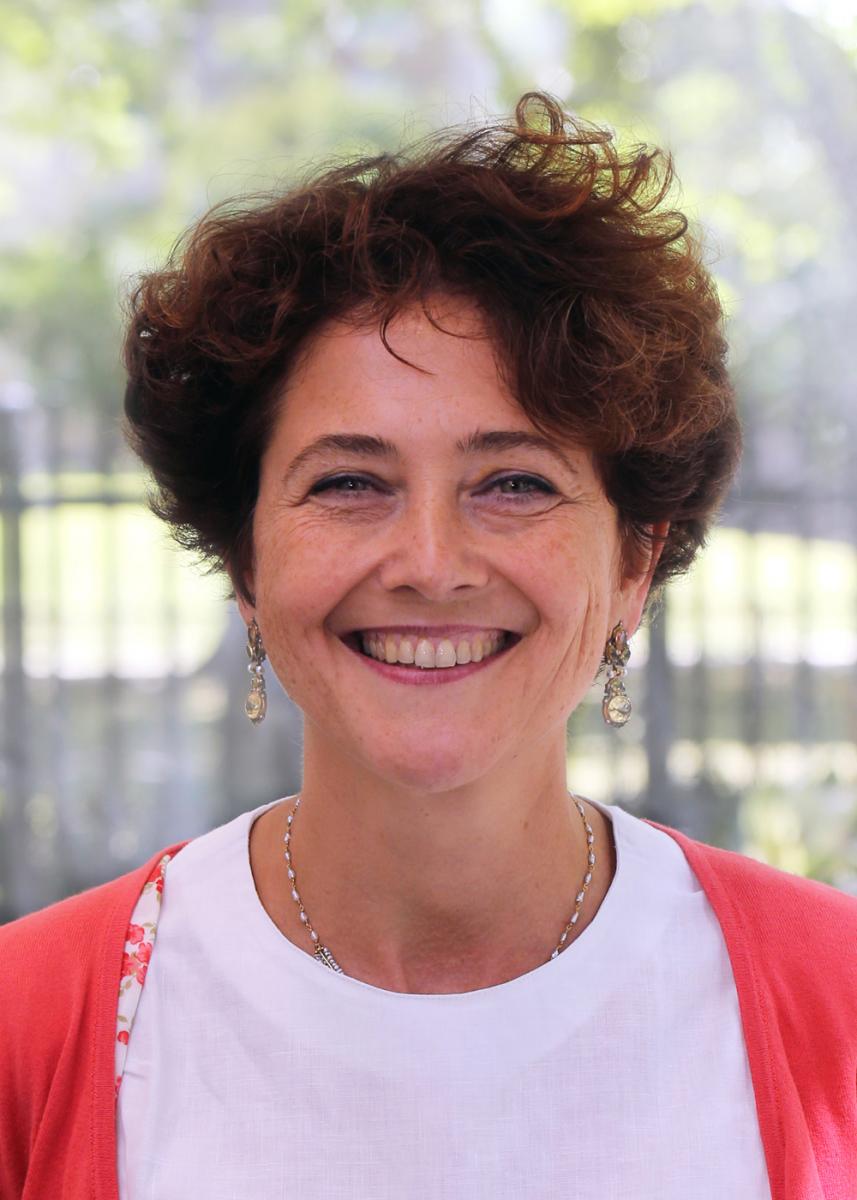
selected as EMBL’s next
Director General
EMBL
In June, the European Molecular Biology Laboratory (EMBL) Council selected Edith Heard as the organisation’s fifth Director General. Professor Heard’s tenure is scheduled to begin on 1 January 2019. She is currently director of the Genetics and Developmental Biology Unit at Institut Curie and holds the chair of Epigenetics and Cellular Memory at the Collège de France, both in Paris, France.
“I am extremely honoured to be offered this opportunity to serve European science as Director General of EMBL”, said Edith Heard. “As a deeply committed citizen of Europe, I will endeavour to promote the scientific excellence and service to the scientific community that characterise EMBL”, she said.
For more information, visit the EMBL news website.
EMBL is Europe’s leading laboratory for basic research in molecular biology, with its headquarters in Heidelberg, Germany.
ESA: 500 new European companies from space
Investment in young companies by the European Space Agency (ESA) has now fostered more than 500 start-ups that are adapting space technology and satellite services for use on Earth. From healthcare to manufacturing, sport to agriculture, the ESA technology transfer programme is positioning Europe at the forefront of innovation.
Among these start-ups is a drone delivery service developed by entrepreneurs in Portugal; a French start-up offering improved direct communication with the ground for aircraft pilots and Wi-Fi for their passengers’ electronic devices; and a German company that has developed a treatment for bacterial infection in wounds by applying ‘cold plasma’, which is based on experiments on the International Space Station.
To read the full press release, visit the ESA website.
ESA is Europe’s gateway to space, with its headquarters in Paris, France.
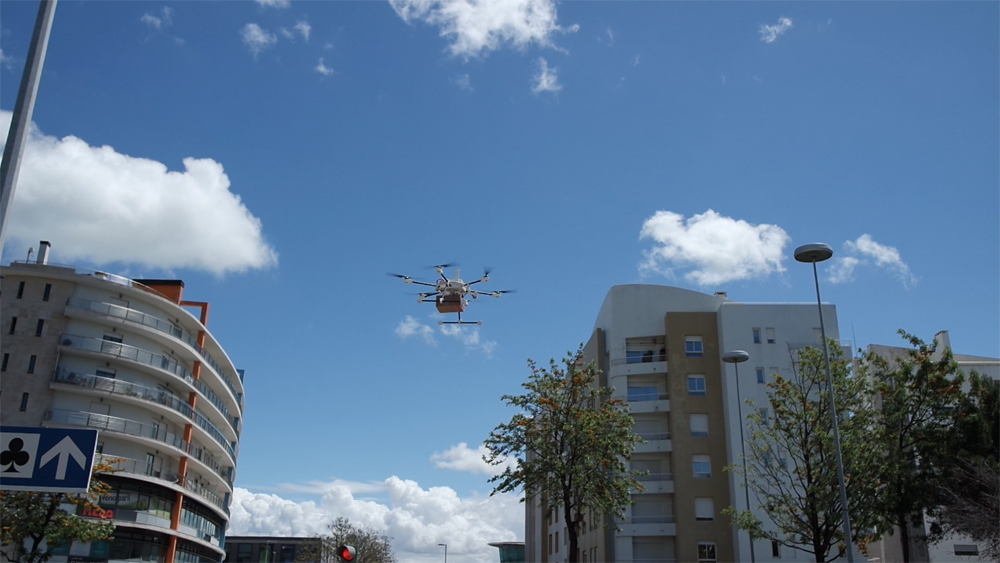
ESA
ESO: Mapping the surface of stars
For the first time, astronomers have mapped the motion of material on the surface of a star other than the Sun. The velocity map of Antares, a red giant star, was made thanks to the Very Large Telescope Interferometer (VLTI) of the European Southern Observatory (ESO).
Surprisingly, the map revealed turbulent, low-density gas much further from the star than predicted, indicating that an unknown process may be moving some of the stellar material.
The VLTI is a unique facility that combines the light from the four telescopes of the Very Large Telescope (VLT) array to create one virtual telescope. With the equivalent resolving power of a mirror up to 200 metres in diameter, the VLTI can reveal fine details far beyond what can be seen with a single VLT telescope.
To read the full press release, visit the ESO website.
ESO is the foremost intergovernmental astronomy organisation in Europe and the world’s most productive ground-based astronomical observatory, with its headquarters in Garching, near Munich in Germany, and its telescopes in Chile.
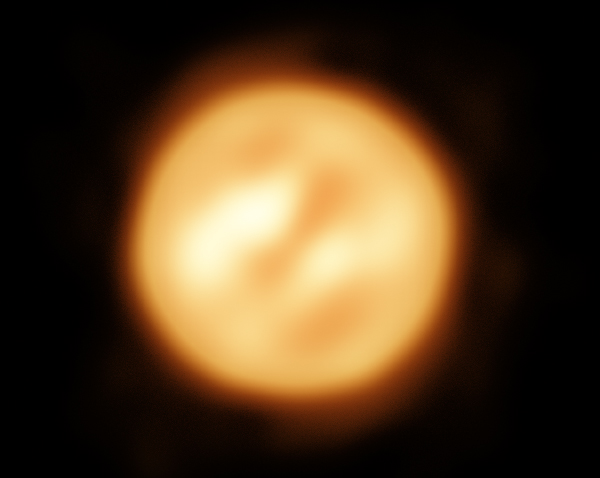
ESO/K Ohnaka
ESRF: How tattoo ink travels inside the body
For someone wanting a new tattoo, choosing a parlour where they use sterile needles is important. But how many people give any thought to the chemical composition of the tattoo ink itself? A new study has highlighted that understanding the potential impurities in tattoo ink is essential, too.
The study, which was carried out by scientists in Germany and at the European Synchrotron Radiation Facility (ESRF), looked at how tattoo ink travels inside the body. Most tattoo inks contain organic and inorganic pigments, but they also include preservatives and contaminants such as nickel, manganese or cobalt. These substances can be taken up by lymph fluid or blood and are then transported to the lymph nodes.
The study provides the first analytical evidence that the pigments – including any toxic impurities – travel within the body in nanoparticle form. “The problem,” says Bernhard Hesse, one of the authors of the study, “[is that] we don’t know how nanoparticles react.”
Two beamlines at ESRF were crucial to the breakthrough, which also involved scientists at the German Federal Institute for Risk Assessment, the Ludwig-Maximilians University and the National Metrology Institute of Germany.
To read the full press release, visit the ESRF website.
For more information on the study, read the original research paper. See:
Schreiver I et al. (2017) Synchrotron-based ν-XRF mapping and μ-FTIR microscopy enable to look into the fate and effects of tattoo pigments in human skin. Scientific Reports 7: 11395. doi: 10.1038/s41598-017-11721-z
Situated in Grenoble, France, ESRF operates the most powerful synchrotron radiation source in Europe.

StockSnap/pixabay.com
EUROfusion: JET – a muse for musicians
The Joint European Torus (JET) – EUROfusion’s flagship device and the largest tokamak in the world – is not just an inspiration for fusion energy researchers; it is now capturing the imagination of musicians. Electronic music band Poupées Électriques has recorded the futuristic sounds of the fusion reactor for their latest album, which will be released shortly.
The band’s frontman, Carlos Arillo, was looking for sounds that conveyed the theme of futurism when he ran into an old friend, Ana Manzanares, a researcher at JET. Ana convinced Carlos that the tokamak would be ideal. “I was left speechless by the richness of JET’s tunes. They come with a large spectrum of frequencies and dynamic changes”, says Carlos. The term ‘fusion’ in music has indeed taken on a completely new meaning!
EUROfusion manages and funds European fusion research activities, with the aim to realise fusion electricity by 2050. The consortium comprises 30 members from 26 European Union countries as well as Switzerland and Ukraine.
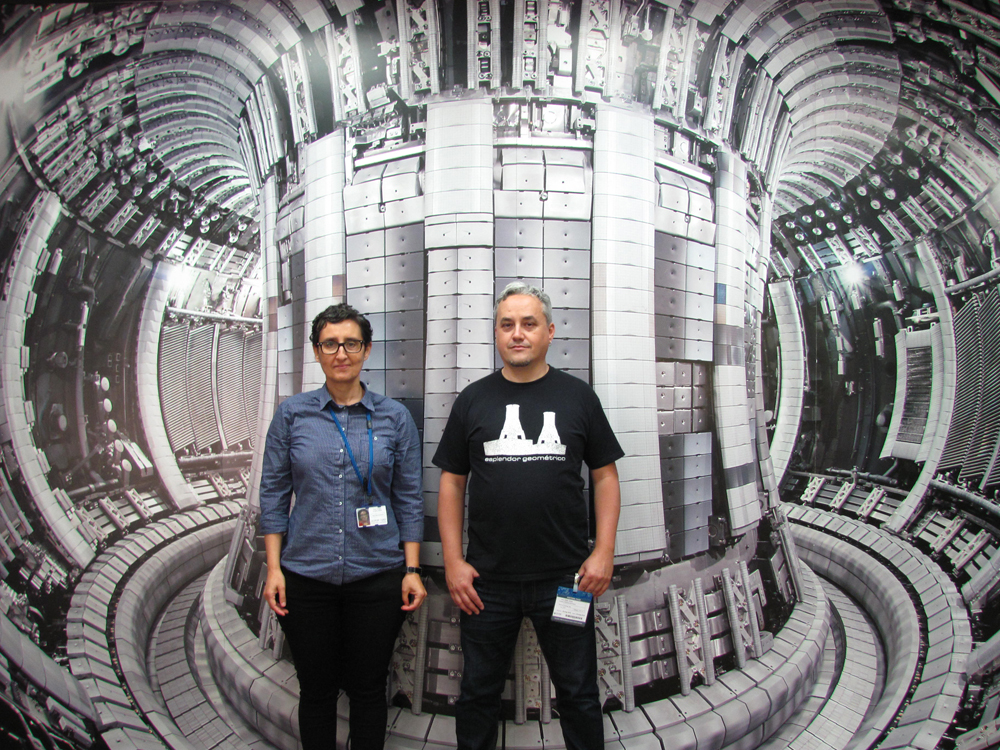
EUROfusion/Private
European XFEL: First X-ray laser users
The first users have now started experiments at the new international X-ray laser at European XFEL. In this first round of beam-time, a total of 14 groups of up to 80 users each are travelling to the new research facility from across the globe. Until March 2018, each group will have about five days of 12 hours of beam-time at the FXE and SPB/SFX instruments to carry out experiments.
The FXE instrument will enable research into extremely fast processes. It will be possible to create ‘molecular movies’ showing the progress of chemical reactions. The first experiments conducted at FXE include using different spectroscopy methods to track ultrafast reactions and electron movement in model molecules, probing organic light-emitting diodes, and investigating the recombination of nitrogen and oxygen in the muscle tissue protein myoglobin.
The SPB/SFX instrument will be used to gain a better understanding of the shape and function of biomolecules, such as proteins, that are otherwise difficult to study. Several of the first experiments at this instrument focus on ways to reduce the amount of precious sample used for examining biological processes. Other groups are studying biological structures such as viruses, and processes such as the splitting of water molecules in photosynthesis.
More instruments are scheduled to be available for users until the end of next year.
European XFEL is a research facility in the Hamburg area in Germany. Its extremely intense X-ray flashes are used by researchers from all over the world.
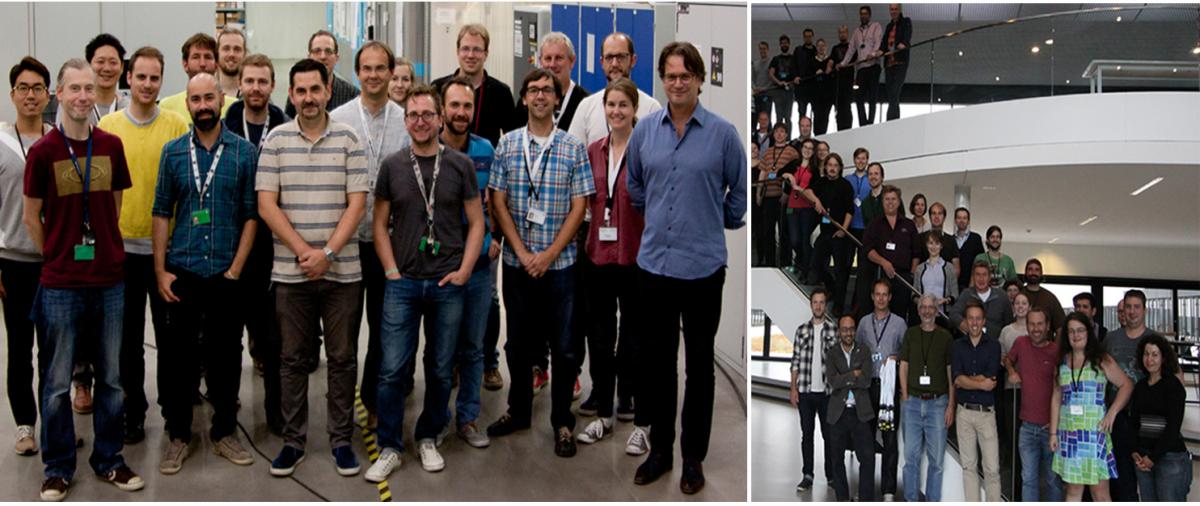
European XFEL
ILL: Neutrons lead the way for optimised crash-tolerant cars
Boron steel is an ultrahigh-strength steel used across a variety of industries. It is particularly attractive to the automotive industry, due to the reduced vehicle weight and the increased passenger safety that it provides.
However, scientists at the Institut Laue-Langevin (ILL) have found a strong correlation between residual stress in boron steel and spot welding – an important process used to join metals for motor vehicle manufacturing.
The study used neutron diffraction experiments carried out at ILL’s SALSA instrument. The findings highlight the need for alternative welding methods that have a less damaging impact on boron steel and can lengthen the lifetime of the material, ultimately providing better passenger safety in stronger, yet lighter, vehicles.
Based in Grenoble, France, ILL is an international research centre at the leading edge of neutron science and technology.
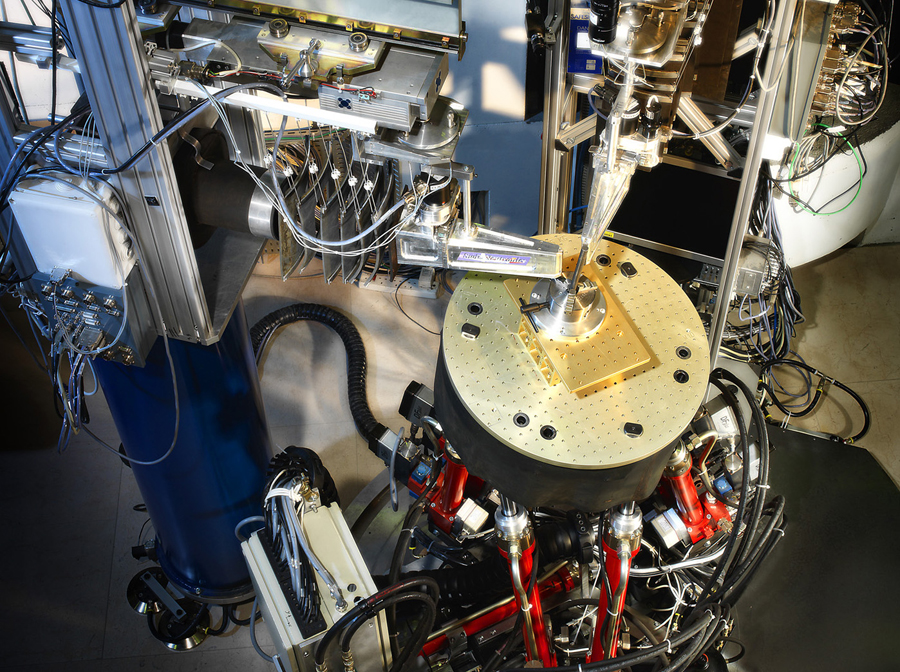
ILL
EIROforum
EIROforum combines the resources, facilities and expertise of its member organisations to support European science in reaching its full potential.
To learn more, see also the list of EIROforum-related articles in Science in School or browse the other EIRO news articles.






